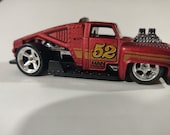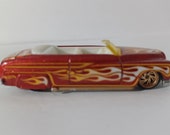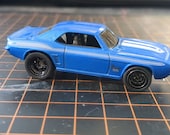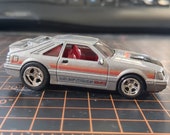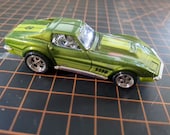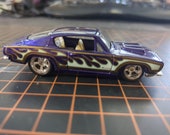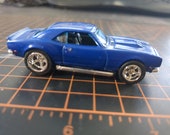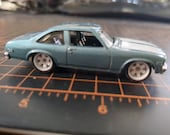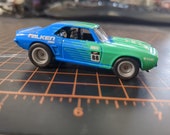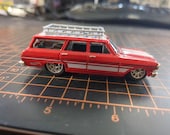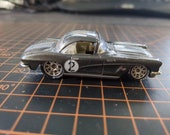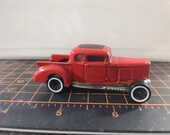Paul Wolfe’s partnership with Joey Logano of Middletown, CT nearly began many years earlier, back when the young crew chief was a budding talent atop the pit box looking for a steady NASCAR gig, and back when the teenaged driver was most closely connected with the “Sliced Bread” nickname as a next-big-thing prospect.
“It’s funny how this works out, what a small world it is,” Wolfe says, retelling the story of that crossroads moment now, just weeks removed from winning a Cup Series championship with Logano and with both now as veterans at the top of the stock-car world.
Wolfe was still finding his way after his driving days had ended, earning a reputation for extracting the most performance from equipment that wasn’t quite elite. By 2009, the team that employed him was headed for a shutdown at season’s end, and two solid offers in the Xfinity Series were in the works.
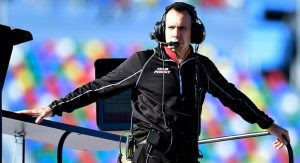
Brad Keselowski wanted him to be part of his move to Team Penske and a full-time Xfinity campaign. Joe Gibbs Racing had interest in pairing him with Logano, then a Cup Series rookie who still ran a majority of the Xfinity events.
After some initial resistance, Wolfe went with the less-established Xfinity program. He’s been under Roger Penske’s employ ever since.
“I just saw it as an opportunity to build something, rather than just taking over,” Wolfe said. “I don’t know, the thought of building something from nothing was more exciting to me. And that’s really what was the deciding factor for me to go to work at Penske.”
Years later, the 45-year-old Wolfe will be feted with Logano at Champion’s Week festivities in Nashville. It’s the second Cup Series championship for both, and Wolfe has joined the short list of crew chiefs to win premier-series titles with multiple drivers.
It’s been a life’s journey to arrive at this point, with a decade in between those crowning achievements. “Building something” has been more than a deciding factor. For Wolfe, it’s been a mantra.
Starting to grow
“I’ve been in racing for a long time and if you want something, you have to work hard for it. Eventually it’s going to pay off for us.” – Paul Wolfe, Poughkeepsie (N.Y.) Journal, Oct. 5, 2001
Paul Wolfe knew he wanted to be involved with racing early on. Growing up in Milford, New York, Wolfe watched his father, Charlie, compete in Modifieds as a regular at tracks in his home state – Fonda, Utica-Rome, Five Mile Point. He started in go-karts just after turning 10 years old, and soon began traveling in that youth circuit before moving up the ladder.
His younger brother, Steve, took a similar path, but with more of a focus on high school sports than in karting circles. His athleticism later led him to over-the-wall duty, serving as a tire changer for Dale Earnhardt Jr.’s No. 8 among other teams. Today, he’s in an assembly manager’s role at 23XI Racing.
Wolfe’s ambitions led him to move closer to the NASCAR hub in North Carolina in 1996, when he connected with Coy and J.D. Gibbs in their Late Model days. That opened the door to some driving, some building on the fabrication side, and a wealth of foundational learning. All the while, Wolfe had a career safeguard in place.
“I took my New York state tests to be a certified welder. We can work on bridges and do that kind of work,” Wolfe says, recalling his six months of training on a vocational school scholarship in Ohio. “That was kind of like my backup plan if the NASCAR stuff didn’t work out, because I could make a living as a welder. So I kind of had that with me as I went down south.”
His association with the Gibbs organization led to opportunities in the Busch North Series, which evolved into the ARCA Menards Series East. Wolfe drove partial schedules in five seasons (2000-04), netting two pole positions and a best finish of second place on four occasions.

Wolfe later drove part-time in the Xfinity Series, making 16 starts with team owners Tommy Baldwin, Ray Evernham and FitzBradshaw Racing. His time with the Baldwin operation was as part of the team’s Hungry Drivers Program, an audition among several prospects seeking full-time rides, but those part-time seats ran dry by the time 2005 came to a close.
“There just really wasn’t anything for me,” Wolfe says. “I didn’t have any sponsors or anything like that. So I was like well, I got into the sport, learned it as a mechanic, doing it as a fabricator, I can pretty much do anything, and it was like, ‘Well, I’ve kind of got to make a living here.’ ”
Wolfe found steady work with a handful of mid-level teams, starting as a set-up specialist in a shop-based position. But the lure of being at the track was still strong, and a crew chief role was the natural progression.
The list of drivers Wolfe worked with the next few years was extensive – Mike Skinner, Denny Hamlin, Robby Gordon, Scott Lagasse Jr., Jason Leffler among others – but he had no wins to show for the strong showings. Two full-time opportunities were open for 2010, and when Penske representatives pressed him, it seemed like a logical step.
“Oh, man,” Wolfe recalled thinking. “I probably should go talk to these guys.”
One of the most enduring driver-crew chief pairings in recent NASCAR history wasn’t exactly love at first sight. Brad Keselowski had invited Wolfe to meet with him in his motor coach at Michigan International Speedway in August 2009, hoping to forge a partnership for the next season.
Wolfe recalls Keselowski not being able to say precisely where he was headed at the time, but there was already some hesitation concerning a potential clash in personalities. Keselowski had started to establish himself as an up-and-comer with a winning pedigree, but his brash reputation came in sharp contrast to Wolfe’s calm, reserved demeanor.
“Honestly, I wasn’t a big Brad fan, to be honest with you,” Wolfe says. “At that time, I don’t really like this guy, you know, I like where I’m at. I pretty much said, ‘I appreciate taking the time to meet but I think at this point, I’m all set,’ and just basically just told him I didn’t want to do it. And that was that.”
Penske officials, however, had taken their own separate liking to Wolfe, something they later broached with Keselowski.
“I guess Brad told them, ‘Don’t even bother. I’ve already met with him. He turned me down,’ ” Wolfe said.
“I kind of laughed and said, ‘Good luck,’ ” Keselowski told the AP in 2012. “They said, ‘we’ve been talking to him the last two weeks and he wants to do it.’”
The change of heart stemmed at least partly from Wolfe’s uncertain future with the CJM Racing team, which was nearing an offseason closure. The chance to build anew with an organization that was entrenched and expanding in the Cup Series was there.
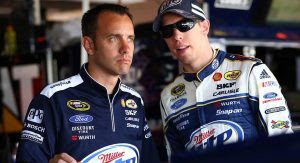
What emerged was one of the most dynamic driver-crew chief debuts in national-series history. Keselowski clinched what was then called the Nationwide Series championship with two races left on the schedule, racking up six wins and amassing 26 top-five finishes in 35 starts. He completed all but one of the 6,489 possible laps and led 1,147 of those (17.7 percent). His average finish for the season was a spellbinding 5.2.
“I guess when you’ve had to work with not much for so long, we became efficient and got the most I could out of what I had,” Wolfe said. “And then you go to Penske, and there’s so many resources and people and technology that I was like, I don’t want to say it made it easier, but I just used what I learned through my struggles and then took what they had, and we were able to build something great.”
The growth continued once Wolfe joined Keselowski in the Cup Series in 2011. The year before, Keselowski had some initial difficulty adjusting to the move up to NASCAR’s top division as a rookie, but gained ground after partnering again with Wolfe. A three-win campaign set the stage for a memorable championship march the next year, delivering Roger Penske his first Cup Series title in 2012.
Victory Lane visits were regular events for the two, who posted at least one win in each of their nine seasons together. But the push for a second title for the No. 2 Ford team came no closer than Keselowski’s Championship 4 appearance in 2017.
“We were both pretty young and didn’t know any better. I feel that’s the essence since I’ve won my second championship, really,” Wolfe said. “At that time, I honestly didn’t know no better. I didn’t realize how hard it really is, and maybe that was why we had so much success is because we just we didn’t know any better. We were just working hard and going racing and having fun. And then you look, it’s taken 10 more years to get another one.
“This is harder than you think it is, and it takes so many pieces of the puzzle to get them together right, to really have a legitimate shot at racing for a championship.”


